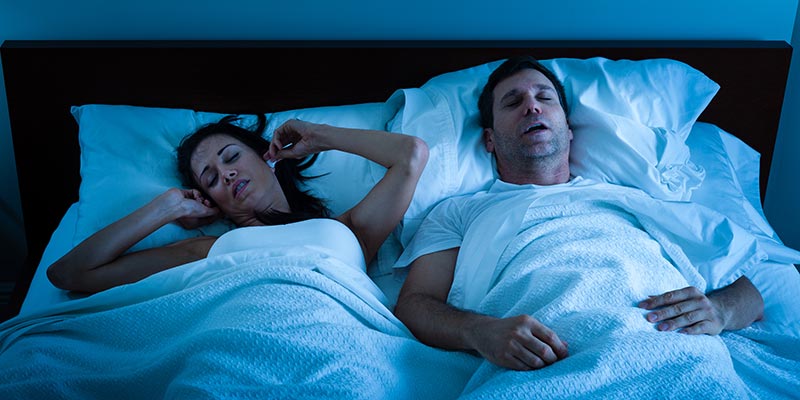
Treating Obstructive Sleep Apnea: What Are Your Options?
If you have Obstructive Sleep Apnea (OSA), there are a variety of treatment options. The first step in seeking treatment for sleep apnea is to talk to your doctor. Sleep apnea must first be diagnosed, usually through a sleep study in which you will need to stay overnight and have your sleep monitored by a professional. Once OSA is diagnosed, the best form of sleep apnea treatment can be selected by you and your doctor.
Types of Sleep Apnea Treatment
Continuous Positive Airway Pressure (C-PAP)
C-PAP therapy is the most widely recommended and successful therapy for treating sleep apnea. C-PAP is most common with OSA patients who suffer from moderate to severe sleep apnea, which generally cannot be successfully treated with other the other options listed below.
How C-PAP Works
C-PAP machines generate a gentle stream of pressurized air that is directed through a hose to a small mask that attaches over your nose. This positive airflow keeps your passageways from becoming blocked during the night while you sleep.
While C-PAP is the most common form of sleep apnea treatment, many patients find it cumbersome and frustrating. There are different types of masks that can be used, as well as variations on the C-PAP machine itself. So if you have initial struggles with C-PAP therapy, don’t throw in the towel too early. Talk with your doctor about adjustments that can be made.
Oral Dental Appliances
Sleep apnea can be treated with custom designed oral dental appliances, although this form of treatment is generally used by patients who suffer from only mild to moderate sleep apnea. There are two types of dental appliances for sleep apnea: Mandibular Advancement Devices and Tongue Retaining Devices. Instead of generating positive airflow like a C-PAP machine, these appliances manipulate either the jaw or tongue to keep your passageways open.
How Oral Dental Appliances Work
Mandibular Advancement Devices (MADs) are similar to the mouthguards used by athletes, except that they are designed to shift the lower jaw forward, thus opening the airway and holding it open throughout the night.
Tongue Retaining Devices (TRDs) are basically a splint that holds the tongue in place, preventing it from shifting to the back of the throat during the night.
With either dental appliance, the goal is to hold the airway open, allowing you to be able to breathe comfortably and without obstruction.
Sleep Better Northwest utilizes the newest appliances that provide strength and comfort with the least amount of bulk and does not use TRDs.
Surgery
There are a range of different surgery options available to sleep apnea patients, some minimally invasive, others more complicated. While surgery treatments address different parts of the mouth or throat, they generally all have the same goal: to remove the tissue that collapses and blocks your airway during the night.
Different Types of Sleep Apnea Surgery
- Soft Palate and Uvula
- Upper Jaw
- Lower Jaw
- Tongue
- Tonsil and Adenoids
When considering surgery to treat sleep apnea, patients need to be made aware of the drawbacks of surgical procedures. Sleep apnea surgeries can be painful and require a recovery period. In certain cases, the benefits of surgery will not last, and most professionals find that surgery is less effective than C-PAP or dental appliances.
That said, surgery can be the best option for some patients and shouldn’t be ruled out as a possible form of treatment, especially if C-PAP and dental appliances have failed.
Lifestyle Changes
Sleep apnea is commonly associated with both overweight patients and those who drink heavily. Excess tissue in and around the throat increases the likelihood of blockage while sleeping. Alcohol relaxes muscle tissue, which can lead to blocking air passages during sleep.
Sleep apnea is also associated with congestion. Patients with severe allergies may be able to alleviate sleep apnea with proper decongestants.
Positional Therapy
Obstructive Sleep Apnea is often associated with patients who lie prone on their backs in a supine position while sleeping. Positional therapy is a form of treatment that trains patients to sleep on their side instead of on their back. In some cases, simply shifting positions is enough to alleviate sleep apnea.
How Positional Therapy Works
Positional therapy often includes the use of a special device that wraps around the body and maintains a side-sleeping position for the patient. This device prevents the patient from rolling onto their back while asleep.